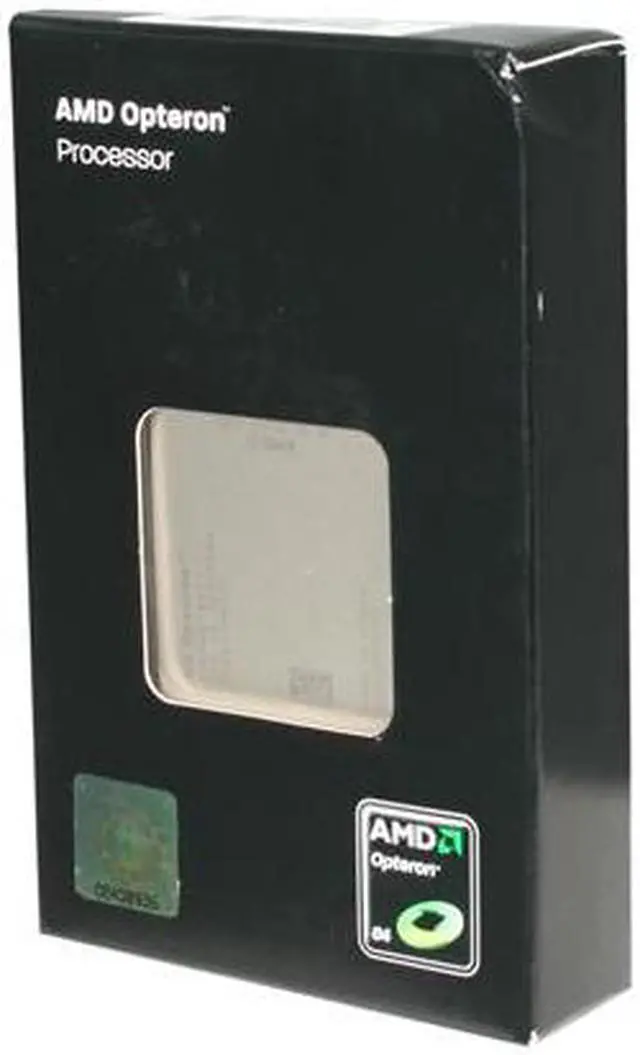Your Browsing History

Any questions? Our AI beta will help you find out quickly.
 Eight-CoreThe AMD Opteron 6128 integrates of up to 8 cores within the same package with each core having its own L1 and L2 caches as well as a shared 12MB L3 cache, offering improved performance and performance/watt (compared to prior generations) for multithreaded environments like virtualization, database, and web serving.
Eight-CoreThe AMD Opteron 6128 integrates of up to 8 cores within the same package with each core having its own L1 and L2 caches as well as a shared 12MB L3 cache, offering improved performance and performance/watt (compared to prior generations) for multithreaded environments like virtualization, database, and web serving. Advanced Power ManagementThe AMD Opteron 6128 boasts AMD CoolCore technology, AMD PowerNow! technology, Enhanced C1 state, AMD CoolSpeed technology, APML (in APML enabled platforms) for unprecedented power efficiency.
Advanced Power ManagementThe AMD Opteron 6128 boasts AMD CoolCore technology, AMD PowerNow! technology, Enhanced C1 state, AMD CoolSpeed technology, APML (in APML enabled platforms) for unprecedented power efficiency. Multiple Memory SupportThe AMD Opteron 6128 supports Quad-Channel LV & U/RDDR 3, ECC, and supports for on-line spare memory, up to 3 DIMMs/channel and 12 DIMMs per CPU, which helps to reduce overall power consumption and improve overall system performance.
Multiple Memory SupportThe AMD Opteron 6128 supports Quad-Channel LV & U/RDDR 3, ECC, and supports for on-line spare memory, up to 3 DIMMs/channel and 12 DIMMs per CPU, which helps to reduce overall power consumption and improve overall system performance. AMD64 with Direct Connect Architecture 2.0AMD64 technology allows the Opteron 6128 processor to run 32-bit applications at full speed while enabling a new generation of powerful 64-bit software applications. Moreover, the Opteron 6128 is built on AMD’s revolutionary Direct Connect Architecture, where processors are directly connected to one another. An I/O and memory subsystem are also directly connected to each processor, helping improve overall system performance and efficiency.
AMD64 with Direct Connect Architecture 2.0AMD64 technology allows the Opteron 6128 processor to run 32-bit applications at full speed while enabling a new generation of powerful 64-bit software applications. Moreover, the Opteron 6128 is built on AMD’s revolutionary Direct Connect Architecture, where processors are directly connected to one another. An I/O and memory subsystem are also directly connected to each processor, helping improve overall system performance and efficiency. HyperTransport 3.0 Technology with HT AssistHyperTransport Technology (HT or HTT) is a high-speed, low latency, point-to-point link designed to increase communication speeds between integrated circuits in computers, servers, embedded systems, and networking and telecommunications equipment. HT 3.0 technology offers the processor up to a maximum 6.4GT/s interconnect rate. HT Assist helps to increase coherent memory bandwidth and reduce latency in multi-node systems by reducing cache probe traffic between cores, resulting in faster queries that can increase performance for cache sensitive applications such as database, virtualization, and compute intensive applications.
HyperTransport 3.0 Technology with HT AssistHyperTransport Technology (HT or HTT) is a high-speed, low latency, point-to-point link designed to increase communication speeds between integrated circuits in computers, servers, embedded systems, and networking and telecommunications equipment. HT 3.0 technology offers the processor up to a maximum 6.4GT/s interconnect rate. HT Assist helps to increase coherent memory bandwidth and reduce latency in multi-node systems by reducing cache probe traffic between cores, resulting in faster queries that can increase performance for cache sensitive applications such as database, virtualization, and compute intensive applications. AMD Virtualization (AMD-V) 2.0Virtualization allows multiple operating systems, applications, or user sessions to run simultaneously on a single computing system. AMD Virtualization (AMD-V) is a set of unique on-chip features that help AMD processor-based servers and clients run multiple operating systems and applications on a single machine by improving the efficiency of virtualization software. AMD-V technology allows you to better utilize your resources, which makes your client systems, servers, and datacenters more effective.
AMD Virtualization (AMD-V) 2.0Virtualization allows multiple operating systems, applications, or user sessions to run simultaneously on a single computing system. AMD Virtualization (AMD-V) is a set of unique on-chip features that help AMD processor-based servers and clients run multiple operating systems and applications on a single machine by improving the efficiency of virtualization software. AMD-V technology allows you to better utilize your resources, which makes your client systems, servers, and datacenters more effective.